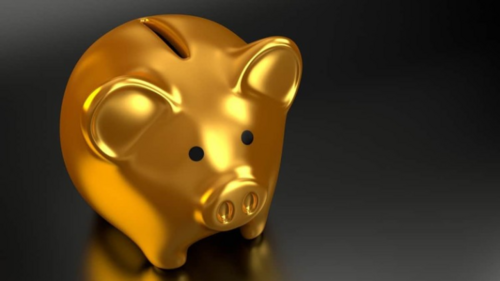

The United States has some of the highest drug prices in the world. Prescription medications that Canadians or Europeans might deem “expensive” are merely a drop in the bucket for U.S. residents.
While the high cost of medication has been a topic of conversation in the media, among political parties, and in campaign speeches in the past decade or so, this problem is not even close to being “new.” The cost of prescription drugs in the U.S. has been on the rise for many decades.
The reason it's been such a major issue as of recently is that the cost of prescription drugs has increased so exponentially in the past 20 years.
A report from the U.S. Homeland Security and Governmental Reforms Committee analyzed the prices of 20 common medications used by Americans enrolled in Medicare (government-sponsored health insurance for people ages 65 and older) and Medicaid (government-sponsored health insurance for the poorest Americans).
The report found that between 2012 and 2017, the average increase in price among the drugs analyzed for the report was 12% per year. One of those drugs (Nitrostat) increased an average of 42% each year, starting off at $16.00 and ending at $92.00. Mind you, this is $92.00 per month.
If you're an American, you might be hearing that Canadian drugs are cheaper than the ones you're being sold at your local pharmacy. But you might also assume that these drugs are not the same, or that they're unsafe.
But did you know that drugs sold in America are essentially the same as Canadian drugs? There is typically no substantive medicinal or therapeutic difference between the drugs that are available in the U.S. and those available just across the border — or in many other places in the world.
The big question then is why? Why are Canadian drugs cheaper? Why are Americans suffering under the weight of extraordinarily high prices when other people in the world can get the essentially the same medication for a fraction of the price?
Here are some major reasons for the significant price discrepancy, and how you can save money on your prescription drugs.
Drugs are cheaper in Canada than they are in the U.S. That's a simple fact. This is largely due to stringent regulation in Canada that prevents drug manufacturers from charging exorbitant prices for their products. Of course, the thought process here is that a medication doesn't do any good for the patient if they cannot afford to purchase it and take it.
On the opposite end of the spectrum, the U.S. does not regulate drug prices. In fact, they play absolutely no role in the price-setting process. Unlike most other countries, the U.S. allows drug companies to determine the prices of medication without any involvement from the government. This completely overlooks a very important factor: how high prices can affect the health and well-being of U.S. residents.
Prices are not regulated by the government once a new drug is manufactured and ready to sell. Instead, the decision is made by the drug companies themselves. Drug prices are then negotiated by individual insurance companies before they are sold to U.S. consumers.
Of course, this means that the type of insurance you have (if you have insurance — because Americans are not required to carry it and many don't have any) can have a major effect on the cost of your medication. If your insurance company wants you to take a certain medication over another (say, Symbicort over Advair), they can put Advair in a higher tier so you have to pay more for it.
They can design their prescription plans in such a way that it essentially discourages people from taking certain medication — arguably something that they have no business doing because it's often not in the best interest of their enrollees.
If you don't have insurance at all, or if your insurance company lists your medication as top tier, you're left paying the cash price for it. In some cases, this isn't a big deal — there are some generic medications that are very affordable. However, if you need something expensive (especially for a chronic disease), you might be out of luck.
Research shows that U.S. drug prices are consistently higher than in European countries. Prices are six times higher than in Brazil and 16 times higher than the average lowest-price country, which is usually India. On average, Americans spend $1,200 per year on medication, which is more than anywhere else in the world.
According to an article by Alison Kodjak of NPR, "[a] report published... in the journal Health Affairs, found that the cost of brand-name oral prescription drugs rose more than 9 percent a year from 2008 and 2016, while the annual cost of injectable drugs rose more than 15 percent. The price of insulin, for example, doubled between 2012 and 2016, according to the Health Care Cost Institute. And the price of Lantus, an insulin made by Sanofi, rose 49 percent in 2014 alone, according to the University of Pittsburgh."
Pharmaceutical companies justify their prices based on an argument about the need for innovation and research, but research only accounts for about 17% of cost in drug manufacturing in America. A study on this matter was conducted by Peter Bach, a researcher at Memorial Sloan Kettering, on the 20 top-selling drugs in America.
Through their extensive research, "they found that the cumulative revenue from the price difference on just these 20 drugs more than covers all the drug research and development costs conducted by the 15 drug companies that make those drugs — and then some." Their numbers indicate that the revenue after the cost of research — totaling $80 billion a year — was an additional $40 billion which drug companies kept for profit. That's $40 billion in profit in one year from just the top 20 drugs sold in America.
However, there's evidence that leads researchers to believe pharmaceutical companies are inflating the amount they spend on research and development (convenient, since that's the number they use to justify their exorbitant prices).
A study from the Boston University School of Public Health found that pharmaceutical companies were actually overstating the amount they spend on research and development. While many companies boasted spending 18-20% of revenue on research and development, Socolar and Sager (the researchers on the study) found that the real number is closer to 11%.
To add insult to injury, Socolar and Sager found that overall, pharmaceutical companies were spending as much as three times that amount on marketing. They were literally spending three times their R&D costs just to market the drugs so they could turn a profit. By that logic, American consumers aren't paying for innovation … they're paying for marketing.
Given this information, it's relatively safe to say that hiking up drug prices under the guise of “innovation” doesn't justify the cost to consumers. Instead, when you look closely, the profit margin is grossly higher than the cost of research and development. And those profits seem to be pocketed by pharmaceutical and insurance companies.
Pharmaceutical CEOs are making tens of millions of dollars each year, literally. In the meantime, the companies themselves are bringing in tens of billions. If it were a matter of paying for research and development, why are CEOs taking home so much money and if their drugs are so innovative, why do they have to spend three times their R&D costs to convince doctors and patients to buy them?
.jpg)
